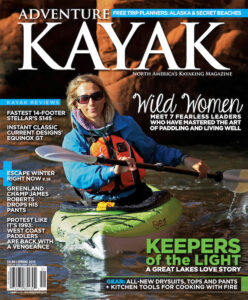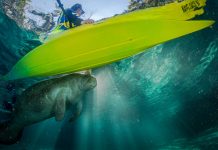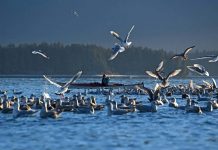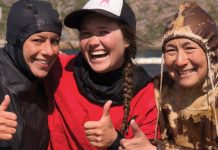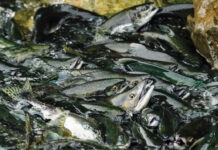It happens every year. Half the planet reels drunkenly away from the fire and the land stumbles like an old inebriate into the coldest season. As our 23.4-degree list inches us further away, the temperature plummets and the days grow shorter. The effect is exacerbated nearer the poles, where our cousins in the far north and south must strap on their headlights for several months of unbroken dusk. Winter has arrived.
On the coasts, ocean currents moderate temperature and saltwater stays stubbornly fluid. For the 35 million people residing mid-continent around the Great Lakes, however, a deep freeze is inevitable. In early winter, Arctic air masses charge across the lakes—still relatively balmy with residual summer heat—inhaling drafts of warm, moist air. The resulting storms clobber surrounding communities with spectacular lake-effect snowfalls, knocking out power and paralyzing transportation. Last November, Buffalo, New York, was inundated with a whopping six feetof snow in just 24 hours.
In the rivers, the current thickens and slows. Ice pans rub shoulders like jockeys on a track. Heavy snowflakes swirl from restless skies and ice creeps implacably outwards from the shorelines. A paddler loading his kayak in this weather must first sweep the snowfall from his roof rack. Scrape the ice from his saddles, precariously perch the boat like a luge at the top of its run.
Even as the snow drifts back over her Subaru, however, a petite woman in a white kayak rotates like a yogi in her cockpit, and falls purposefully into the water. For a moment, gravity and momentum win; water swarms over her face. Then the buoyancy of her body and the careful pressure she exerts inside the kayak bring her back to the surface, where she rests, smiling peacefully.
Around her, similar stunts are playing out: scantily clad kayakers scramble around their decks, practicing self-rescues; others set up for rolls or stand in the water, spotting friends. It’s mid-winter and the sky is pitch black a full hour before the afternoon commute, but the water is so crowded with kayakers, it’s almost impossible to turn around.
“Pool sessions have a fun, supportive vibe where you can maintain the momentum of spring, summer and fall,” says Dympna Hayes, who organizes sold-out winter clinics at community pools in snow-socked central Ontario through her company, Learn to Kayak.

For a handful of even hardier paddlers, kayaking on the lakes lasts as long as there’s open water. When winter storms kick up the best surf of the year, intrepid Lake Ontario paddlers chase waves in the Western Gap near Hogtown’s Toronto Islands. And from late fall through early spring, Michigan-based paddling photographer Erik Olsen relies on his kayak to document the unique off-season landscapes of the upper Great Lakes.
The jaunty tilt of our planet’s axis has presented Olsen with such rare phenomena as last winter’s 15-foot-high ice caves on Lake Michigan. Another trip rewarded with a sunset paddle amongst icebergs. “I had to tow my boat an eighth of a mile to find open water, but it was well worth it,” he says. “Truly a rare treat of a hard winter.”
Virginia Marshall is the editor of Adventure Kayak magazine.
